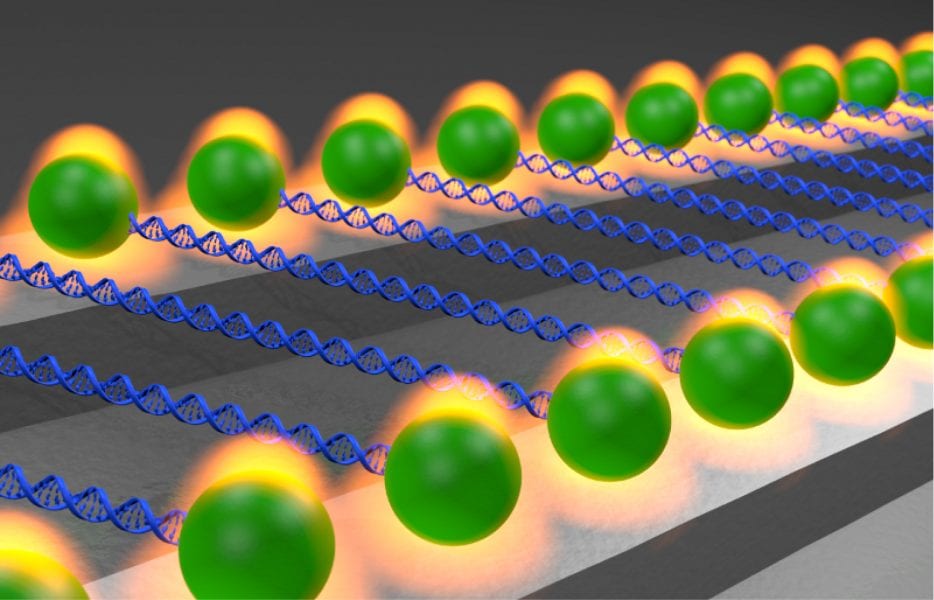Thirty years ago, Arthur Ashkin and colleagues demonstrated that microscopic objects could be trapped and moved around using a beam of light. Since that time, optical trapping has become an incredibly powerful tool for researchers across a broad range of scientific disciplines, with trapped targets ranging in size from clusters of biological cells all the way down to individual atoms. In the biological and biomedical sciences, traditional microscope-based “optical tweezers” have enabled detailed investigations into the behaviors of proteins and nucleic acids with physiologically relevant precision in force and position. However, the optical trapping systems used for these studies have consisted of large, complex assemblies of optical and electronic components, and typically only one target object can be trapped and manipulated at a time.
In recent years, advances in nanotechnology and improved access to nanofabrication foundries have stimulated the development of innovative manipulation techniques based on “near-field” optical trapping. By routing light through nanophotonic waveguiding structures, multiple target objects can be simultaneously optically trapped, sorted, and transported in parallel over the nanophotonic structures, thus bypassing the low throughput limitation experienced by traditional microscope-based optical tweezers. Furthermore, these chip-scale nanophotonic trapping devices hold significant promise for integration with other lab-on-a-chip technologies (e.g., microfluidic sample delivery systems) to enable the production of mobile, low cost, and user-friendly devices that are capable of high-throughput, high precision measurements of individually trapped objects.
In a new review article in WIREs Nanomedicine and Nanobiotechnology, James Baker, Ryan Badman, and Michelle Wang from Cornell University highlight progress in nanophotonic manipulation and measurement, as well as the potential for implementing these on-chip functionalities in biological research and biomedical applications. Starting with simple near-field optical propulsion, the authors present how nanophotonic trapping has evolved to yield technologies like the nanophotonic standing wave array trap (nSWAT) – a coin-sized, on-chip device that integrates nanophotonics, microfluidics, and microelectronics to simultaneously manipulate and measure up to 100s of optically trapped targets with a precision matching traditional microscope-based optical trapping systems. Although many demonstrations in this young field are still at a proof-of-concept stage of development, the authors describe how the individual components that have been developed comprise a tool-box of building blocks for creating future end-user devices that will achieve precise, high-throughput manipulation and measurement of biomolecular arrays.
Contributed by the Authors.

















